Fungi play important roles in nature, medicine, food production, industry and bioremediation, yet we have only discovered ~150,000 out of a potential 6.3 million fungal species. Many people would be surprised to learn that fungi are more closely related to animals than they are to plants, and that the combined biomass of all fungi on Earth is 200 times greater than the entire human race.
Keeping in mind the challenges facing us – climate change, global food insecurity and infectious disease pandemics – I would like to take you through some of the amazing things that fungi have done for us since the beginning of time. I hope that, by the end, you will agree with me that the solutions to many of our problems could be fungal.

Fungi in nature
The fossil record shows us that fungi were one of the first land colonisers and that they formed symbiotic relationships with plants that lacked roots more than 475 million years ago. Together, these fungi and plants sequestered carbon dioxide (CO2) from the atmosphere and reduced it to levels that could sustain other life forms. This symbiosis continues today with around 80% of plant species forming interactions with mycorrhizal fungi in and around their roots, supplying them with carbon in return for nutrients such as nitrogen and phosphorus. These fungal networks allow trees to warn each other of impending pest attacks and facilitate exchange of nutrients between trees, causing them to be nicknamed the ‘wood wide web’ (watch Suzanne Simard’s TED talk How trees talk to each other or read Peter Wohlleben’s Hidden Life of Trees to find out more). These fungal interactions are important for food security as they enhance growth of important crops such as rice, corn, soybean and wheat, increasing their resistance to drought and disease, decreasing the need for phosphorus and nitrogen fertilisers and alleviating stresses to the plant such as pollution and heavy metal contamination. They are also important for carbon sequestration as the majority of carbon stored in plant biomass occurs in those that have formed mycorrhizal interactions. Furthermore, these root fungi can enhance the growth and survival of tree saplings – the mass planting of which is being purported as a solution to climate change.
Soil fungi can also provide the solution to our pest problem, which is expected to worsen as global temperatures rise. At present, 40% of crops are lost to insects, pathogens and weeds and there is growing interest in using fungal properties for biocontrol – as pesticides, fungicides and herbicides. There are currently 171 licensed products that, between them, use 12 species of entomopathogenic fungi as the active ingredient to control 48 families of insect pests, and mycofungicides are commercially available that protect against powdery mildew, root rot disease and soilborne pathogens.
Saprophytic fungi play an important role in the ecosystem, breaking down dead plant matter and recycling carbon and nutrients into the soil, such that life on earth without them would cease after a few decades when nutrients became unavailable. Through their decomposing activities, fungi produce an organic material called humus, which increases the structure and water-holding capacity of soil and acts as the main carbon reservoir in the biosphere, holding an estimated 1600 × 1015 gigatonnes of carbon.
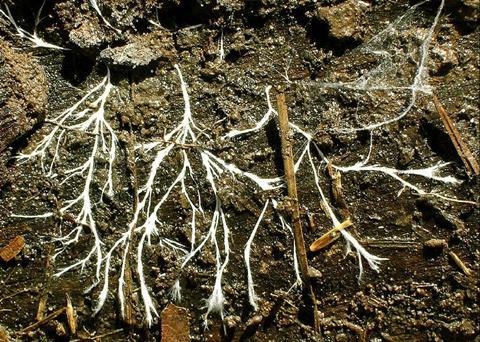
Fungi as food
Perhaps the earliest known use of fungi in food production is baking and brewing using the yeast Saccharomyces cerevisiae, which is first depicted in Egyptian hieroglyphs from 4,000 years ago. The importance of yeast comes from its ability to convert sugars into carbon dioxide and ethanol under both aerobic and anaerobic conditions, which is what causes bread dough to rise and makes wine and beer alcoholic. In the UK, the alcohol industry alone contributes approximately 2.5% of total gross domestic product (GDP) to national income and it is estimated that in the US, 3% of the workforce is employed in yeast-based production.

If you like aged or fermented foods, it is likely there is a fungus involved in its production. It’s probably no surprise that Penicillium roqueforti produces the blue veins in cheeses such as roquefort, stilton and gorgonzola, but you may not know that Penicillium camemberti produces the rind on soft cheeses like camembert and brie or that Penicillium salamii colonises the surface of dry-cured meats, enhancing their flavour and aroma and increasing their shelf-life by preventing spoilage by other microbes. Perhaps the clue is in the names! Many components of Asian cuisine are produced by fermentation using moulds: for example, wheat and soybean are fermented by Aspergillus oryzae or Aspergillus sojae into soy sauce and rice is fermented by Aspergillus oryzae or Saccharomyces cerevisiae into sake.

Fungi in medicine
Probably the best-known example of fungi in medicine is the discovery of penicillin by Sir Alexander Fleming in 1928 (at St Mary’s Hospital, so being a mycologist based at Imperial’s Paddington campus is brilliant!). The discovery happened by accident while Fleming was working on staphylococcal bacteria and noticed that mould contaminants on his agar plates inhibited bacterial growth around them. He nicknamed his finding ‘mould juice’ and later named it penicillin when he identified the mould as Penicillium. Fleming found penicillin to be active against all Gram-positive bacteria and published his findings in 1929, but little notice was taken until 1940 when two scientists, Howard Florey and Ernst Chain, began mass-producing penicillin for use during World War II (WWII). Fleming, Florey and Chain were awarded the Nobel Prize for Physiology or Medicine in 1945 and the discovery of penicillin triggered the beginning of the antibiotic era, which revolutionised the treatment of infectious diseases worldwide and began transitioning the leading causes of death in more developed countries away from communicable diseases.
In Sir Alexander Fleming’s own words, “When I woke up just after dawn on September 28, 1928, I certainly didn’t plan to revolutionize all medicine by discovering the world’s first antibiotic, or bacteria killer. But I suppose that was exactly what I did.”
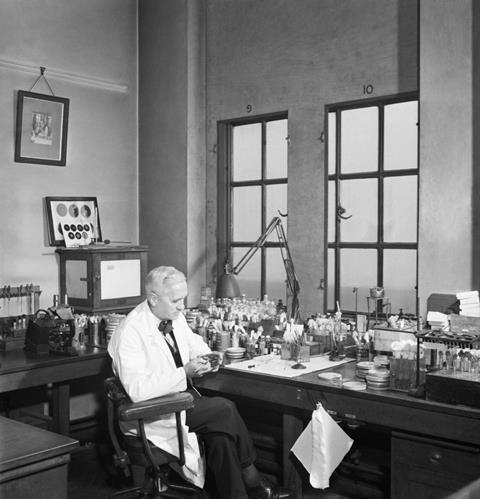
In the years since, many naturally occurring fungal metabolites with antibacterial properties have been discovered, including cephalosporin C, itaconic acid, fumagillin, fusidic acid, alamethicin and aphidicolin. Furthermore, fungal metabolites have been discovered that have antifungal, antiviral and antiprotozoal effects. It is estimated that by 2050, 10 million people will die each year from antimicrobial-resistant infections if we do not develop new antimicrobial drugs. It is likely we have only scratched the surface of what fungi can offer us from the arsenal of antimicrobials they’ve developed over millions of years in an arms race against their microbial competitors.
Statins are produced by Penicillium and Aspergillus species and are best known for reducing deaths due to heart attacks and heart disease by reducing cholesterol levels, but can also inhibit acute myeloid leukaemia (AML), several cancers and melanomas.
Cyclosporine, produced by Tolypocladium inflatum, was the first metabolite produced by a microbe to be licensed for use as an immunosuppressant and is now used extensively in organ transplant patients to reduce graft rejection. Other immunosuppressants produced by fungi are used to treat autoimmune diseases such as Crohn’s disease, rheumatoid arthritis, lupus and psoriasis, as well as for organ transplants.
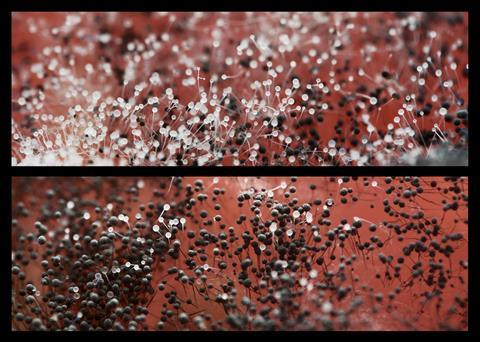
Fungi in industry
Ready-to-assemble furniture maker IKEA has replaced polystyrene with biodegradable mushroom-based packaging, fashion brand Adidas has launched shoes made from mushroom leather and The Lego Group uses itaconic acid to make its tree, leaf and bush components for its toys. These companies are making a commitment to environmentally friendly alternatives produced by or from fungi to reduce our reliance on fossil fuels and animal products. Materials made from fungal mycelium are also being explored for use in construction due to their high tensile strength, acoustic absorbance and natural fire retardance. As the production of mycelium is fast, requires low-energy input, can be grown on waste materials and does not create pollution, mycelial building materials could reduce the carbon footprint of building a house and replace building materials that are in short supply or are energy intensive to produce.
During WWII, the uniforms and tents of Americans serving in the Pacific were disintegrating, which was found to be due to the fungus Trichoderma reesei producing cellulases that were breaking down cellulose fibres in the fabrics. Now cellulases, commercially produced by T. reesei and Aspergillus oryzae, account for approximately 14% of the global enzyme market and are used to give denim fabric a stone-washed look and eliminate hydrogen peroxide after it has been used to bleach cotton. Lipases, commercially produced by Aspergillus niger, account for nearly 10% of the global enzyme market and are used in tanneries to hydrolyse fats, oils and greases present in hides and skins. Catalases and lipases produced by the thermophilic fungus Humicola insolens are added to biological washing powders to breakdown fat stains and to remove cotton threads from the surface of garments to make them feel smoother.

In addition, the fungal enzymes xylanases are used in the paper industry to pre-bleach pulp as an environmentally friendly alternative to chlorine, and pigments produced by wood-staining fungi offer an environmentally friendly alternative to artificial dyes used in the textiles industry.
Fungi may even offer us a solution to our fossil fuel dilemma as they are able to convert cellulose substrates into mycodiesel, which comprises volatile organic compounds (VOCs) – rather than fatty acid methyl esters (FAMEs) in other biodiesels – and could use agricultural waste as a low-cost and sustainable feedstock.

Fungi in bioremediation
In 2012, students at Yale University discovered a mushroom in the Amazon rainforest that can survive solely on plastic. In 2017, a fungus was discovered on a waste disposal site in Pakistan that was degrading polyurethane (PU), which accounts for 6–7% of total plastics produced worldwide. Fungi that are able to absorb radiocaesium have also been found growing in the shelter built around the damaged reactor of the Chernobyl Nuclear Power Plant and on land around Chernobyl and Fukushima power plants. There has been great interest in fungi as absorbents of environmental radionuclides due to the huge surface area of their hyphae and their ability to grow in the presence of radiation, heavy metals and low pH. Mushrooms that accumulate radionuclides prevent them leaching into soil and can be removed and destroyed to prevent consumption by animals or humans, so they could play an important role in the bioremediation of radioactive sites.
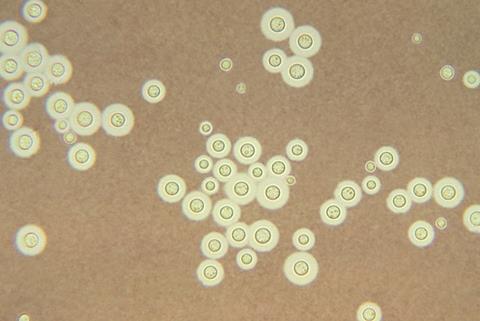
NASA has even funded an astromycology project to discover fungi that are capable of surviving in space – to break down asteroid regolith and to establish healthy soils in extra-terrestrial biospheres.
That was a whistle-stop tour through a lot of the incredible things that fungi are capable of and that we’ve been able to harness to help us in our everyday lives. I truly believe that the answers to most of our current and future problems lie beneath our feet in undiscovered soil fungi, in pristine forests and woodlands or in our global banks of discovered fungi. I am also convinced that fungi hold the keys to curing human diseases, to breakdown our pollutants, to replace fossil fuels, to combat climate change and to provide our growing population with nutritious and sustainable food sources – we just need to unlock their potential. A global fungal discovery pipeline would not be too challenging to establish but the societal rewards could be transformational!

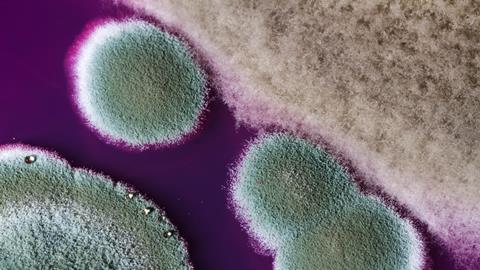






No comments yet